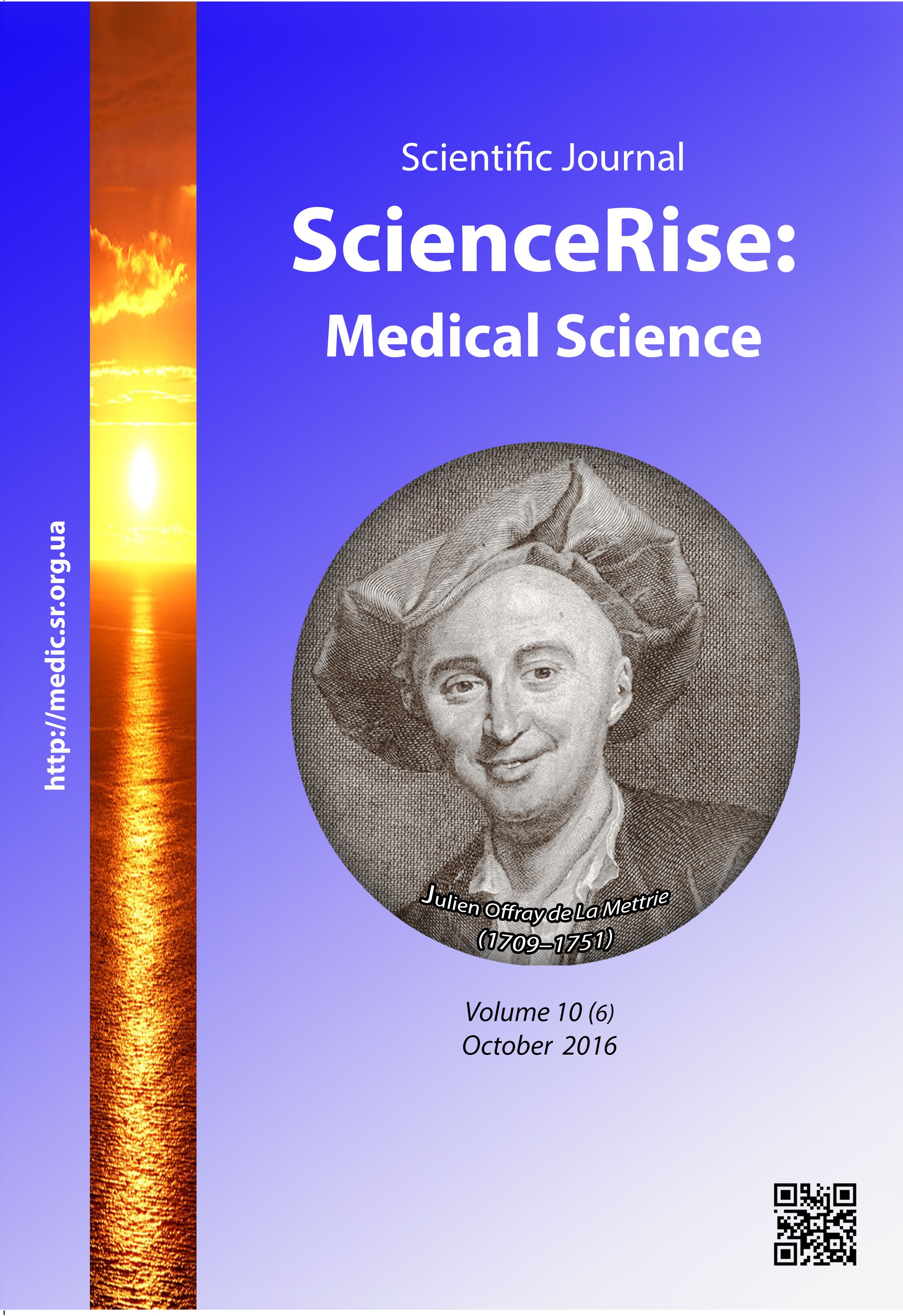The current state of working conditions at metallurgical enterprises of Ukraine
DOI:
https://doi.org/10.15587/2519-4798.2016.79865Keywords:
metallurgical industry, working conditions, professional risk, preventive arrangementsAbstract
At the modern stage of metallurgical industry development the replacement of old technological equipment and introduction of new technologies is very slow. It generates the series of acute hygienic problems, and the influence of professionally harmful factors of production environment of metallurgical enterprises on workers’ health remains essential despite the sanitary-hygienic arrangements.
Methods of research. The complex studies were carried out and the characteristic of working conditions and labor process at 1230 working places for 2010–2015 years at the main technological processes was given.
Results of research. It was established, that the essential modernization of production, automatization and mechanization of the main technological processes took place, the specific weight of operating professions, in which the observance and management of the process is 48–79 % of the general volume of productive operations, increased. At the same time the significant volume of heavy physical work still remains 28−54 %. The labor conditions and type of labor process in 75 % of workers do not correspond to hygienic norms and are related to the 3 class or to the 4 degree of harmfulness and assessed as harmful and dangerous.
Conclusions. The conditions of labor and working process in metallurgical workshops still remain harmful and dangerous moreover the rates of microclimate and dust concentration are the limiting ones. The received results open the prospects for further scientific researches, directed on the professional risk classification, depending on working conditions and introduction of preventive arrangements, directed on its decrease
References
- Kundiev, Y. I., Nagorna, A. M. (2005). Occupational morbidity in Ukraine in dynamics long-term observation. Ukrainian journal of occupational medicine, 1, 3–10.
- Karnaukh, N. G. (2004). Topical issues of preservation of health of the working population. Dovkillia ta zdorovia, 4, 55–58.
- Thorley, K., Hussey, L., Agius, R. (2008). Health, work and the general practitioner. Occupational Medicine, 58 (4), 233–235. doi: 10.1093/occmed/kqn069
- Afanaseva, R. F., Suvorov, V. H. (2002). Іntegrated assessment of the complex factors that lead to thermal stress on the working. Occupational medicine and industrial ecology, 8, 9–15.
- Yushkova, O. Y., Kuzmyna, L. P., Doroshenko, A. S. et. al. (2008). Features of formation of surge at high psycho-emotional stress and shift work. Occupational medicine and industrial ecology, 4, 1–8.
- Ehorova, A. M. (2008). Characteristics of working conditions at the metallurgical enterprises. Hygiene and sanitation, 3, 36–37.
- Basanets, A. V., Krasnykh, E. P., Lubyanova, I. P. (2004). Problems of occupational diseases in Ukraine and ways of their solution at the present stage: Hygienic science and practice at the turn of the century: mater. XIV Congress of hygienists of Ukraine. Kyiv, 38–41.
- Kundiev, Ju. I., Chernjuk, V. I., Vitte, P. N. et. al. (2001). Izuchenie professional'nogo riska zdorov'ju – aktual'naja problema mediciny truda. Zhurnal aMn ukrai'ny, 3, 550–559.
- Smirnov, A., Djudkin, D. (2010). Tok i potok. Jelektronnyj zhurnal "JeSKO", 7.
- Reducing Risks: Protecting people. Discussion document (2001). Health and safety executive. HSE books, 74.
- ILO. Report. Meeting of experts on the revision of the list occupational diseases (Recommendation № 194) (2009). Geneva, 13. Available at: http://www.ilo.org/safework/info/WCMS_116820/lang--en/index.htm
Downloads
Published
How to Cite
Issue
Section
License
Copyright (c) 2016 Оксана Вікторівна Орєхова

This work is licensed under a Creative Commons Attribution 4.0 International License.
Our journal abides by the Creative Commons CC BY copyright rights and permissions for open access journals.
Authors, who are published in this journal, agree to the following conditions:
1. The authors reserve the right to authorship of the work and pass the first publication right of this work to the journal under the terms of a Creative Commons CC BY, which allows others to freely distribute the published research with the obligatory reference to the authors of the original work and the first publication of the work in this journal.
2. The authors have the right to conclude separate supplement agreements that relate to non-exclusive work distribution in the form in which it has been published by the journal (for example, to upload the work to the online storage of the journal or publish it as part of a monograph), provided that the reference to the first publication of the work in this journal is included.









